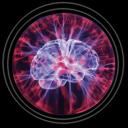Does Your Design Waste Mental Energy?
 How much mental work can you do in one sitting? Are you motivated to tackle tough intellectual or emotional issues? Do you feel mentally invigorated or foggy? Each of these questions tests your level of mental energy. Mental energy is the fuel for self control, active reflection, conscious thinking and other executive cognitive functions. It is an important resource and one we need to manage carefully as we design workflows, consumer experiences, organizational change programs and other knowledge-intensive interactions.
How much mental work can you do in one sitting? Are you motivated to tackle tough intellectual or emotional issues? Do you feel mentally invigorated or foggy? Each of these questions tests your level of mental energy. Mental energy is the fuel for self control, active reflection, conscious thinking and other executive cognitive functions. It is an important resource and one we need to manage carefully as we design workflows, consumer experiences, organizational change programs and other knowledge-intensive interactions.
So I am always on the lookout for scientific studies that directly probe the nature of mental energy. Take for example the new research, Being of Two Minds: Switching Mindsets exhausts self-regulatory resources.
“Across five experiments we found support for the hypothesis that switching mindsets is an executive function that consumes self-regulatory resources and therefore renders people relatively unsuccessful in their self-regulatory endeavors. The current studies found converging effects across a wide range of mindset operationalizations”
A mindset like a mental model is a set of general purpose cognitive constructs and procedures we boot up often in response to situational queues that guide how we perceive, think, feel, decide and act.
Avoid switching mindsets to conserve mental energy.
Although a simple idea, it has powerful implications for the cognitive designer. As you design seek to minimize the number of mindset shifts that must occur during interaction. Designs that invoke a single low-load mindset avoid wasting mental energy.